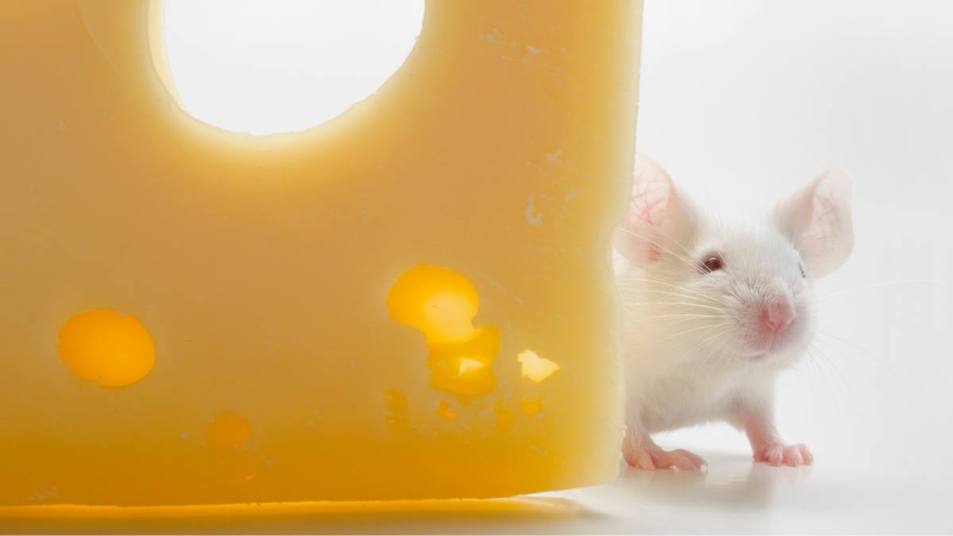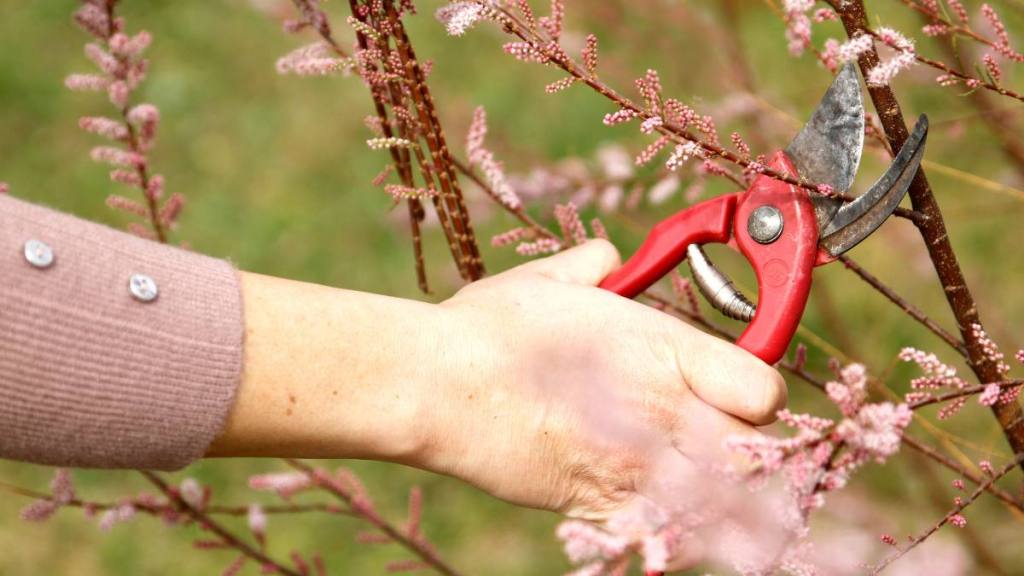What Keeps Mice Away: Pest Control Pros’ Easy Tricks Repel Them Naturally
Hint: they don't mind peppermint

If you’re like us, the very sight of a mouse scurrying across the floor suddenly gives you the superhuman strength needed to leap onto the nearest table or run out of the room faster than you ever thought possible. Of course, once they are already in our home, we have to worry about setting traps and then, even worse, finding them in the traps. A better option: Learning what keeps mice away in the first place so we don’t have to worry about any surprise encounters. The caveat: Not all deterrents are created equal. In fact, some strategies you may have come across won’t work at all. Here, top experts reveal the mouse-thwarting methods you can count on — and point out the ones you should skip.
Why do mice enter our homes?
The answer to that question is simple, declares Nicole Carpenter of Black Pest Control. “Mice want what we want: a warm, dry place to take shelter from the weather and a stable food supply,” she says, adding that because our homes offer these amenities, mice have plenty of reasons burrow into our walls, basements or attics. Luckily, there are ways to frustrate their ambitions and ward them off.
What keeps mice away?
1. Plugging their access points
Shoring up your house from shelter-seeking mice takes a bit of a sharp eye, but it can be done, says Sean Thomas, owner of DIY pest control blog ConquerCritters.com. “Mice have collapsible rib cages, which means they can flatten their bodies to fit in a tiny gap between, say, the bottom of your garage door and the floor, or a hole as small as 2 cm wide.” They are also adept climbers, he notes, so the entryways don’t even need to be ground-level. When looking for mouse entryways, Stoneberger recommends checking the following areas twice a year, in the spring and fall:
Indoors:
- Around doors and windows
- Inside cabinets, particularly the kitchen and bathrooms
- Along baseboards and near vent openings
- Behind appliances
- Around pipes and floor drains
- Along basement walls and crawl spaces
Outdoors:
- Your home’s foundation
- Around pipes, gas lines or electrical wiring
- Your garage door and walls
- Around any weather stripping
- Any outdoor vents and airways
- Attic windows
Now that you’ve identified the entry points of these tiny opportunists, fill in holes and gaps with expandable mouse-proof foam insulation, such as DAP Mouse Foam Sealant (Buy on Amazon, $17) or Smart Dispenser 12 oz. Pestblock Insulating Spray Foam Sealant (Buy at Home Depot, $9.97)
Check out how to apply the foam in the YouTube video below:
Tempted to use steel wool to seal up entry points? Not so fast, cautions Bryan Stoneberger, field agent for Green Pest Services. “A determined mouse can still chew through it, plus it also can cause corrosion problems if you use it around copper plumbing.”
2. Trimming your landscaping

Cutting tree limbs away from your home makes it more difficult for mice — and other critters, like squirrels and raccoons — to access your home via the roof.
“Same goes for bushes or other plants near your foundation,” says Stoneberger. “If you leave those growing right up against your home, mice can hide there and take their time looking for a way in. You always want at least a few inches of open space between plants and your house.”
3. Removing temptation
Food is one of the top reasons mice enter our homes, according to Thomas. And since they can detect scents up to 10 miles away, they’re able to sniff out crumbs on your counters and floors, as well as food left in paper or cardboard containers, which includes pantry staples like rice, cereal, oats, sugar and pasta.
“Ideally, you want to sweep the kitchen daily to stay on top of crumbs,” Thomas says. “And consider storing food in airtight, mouse-proof packaging.” Look for hard plastic food storage bins at the dollar store. Not only are they mouse-proof, they also keep your food fresher longer and can transform your pantry from cluttered to beautifully curated.
To see for yourself how one homeowner did it, check out this YouTube video below:
Then put your feet up and relax, knowing you’ve outsmarted the conniving little critters!
What won’t keep mice away?
1. Peppermint oil
One of the most cited scents to deter mice, peppermint oil has shown limited success in real-world use. “From a true pest professional standpoint, this method is basically a ‘snake oil’ remedy,” says Bryan Stoneberger, field agent for Green Pest Services. “Mice may not like the smell of peppermint, but the odor doesn’t linger very long, so even if you soak cotton balls in the oil and leave them around your house, they’ll only work if you replace them constantly, like every few days.” (Click through to learn what pests peppermint can deter.)
2. Cinnamon
This spice has a similar track record as peppermint, according to Stoneberger. While mice dislike the aroma, it doesn’t have long-term staying power and would only work as a deterrent if you reapplied it often.
3. Hot pepper flakes
Capsaicin, the chemical in spicy foods that makes them “hot,” evolved in plants like peppers with the sole purpose of deterring animals from eating them. But much like many humans, mice aren’t put off by the spicy sensation and will even actively seek it out. Says Carpenter, “While most mice will avoid hot pepper flakes, some don’t seem to mind them in the least or quickly get used to them, so on their own, red pepper flakes aren’t the best deterrent.”
4. Dryer sheets
Though there are folks who swear that leaving scented dryer sheets near cracks and crevices keeps mice away, evidence in defense of this method is flimsy at best. “In fact, one of the most common entry points for mice is right next to or inside the dryer vent, an area that smells very strongly of fabric softener or dryer sheets,” says Megan Wede of Done Right Pest Solutions. “If the sheets were effective, the critters would avoid these spots, not seek them out.”
6. Bleach or ammonia
“Both of these chemicals have extremely strong odors that mice don’t like,” Carpenter acknowledges “Unfortunately, neither will you — and they will only work if you maintain the scent by replenishing it frequently, which is both labor-intensive and not a very enjoyable way to scent your home.”
For more on pest removal, click through the links below!
5. Mothballs
There are two reasons experts suggest staying away from mothballs. “First, naphthalene, the main ingredient of mothballs, is toxic and can pose a threat to the health of sensitive individuals, triggering nausea, vomiting, headaches and respiratory issues in some,” reveals Carpenter. “They’re also not very effective: While the scent of mothballs can deter mice initially, they typically become immune to naphthalene over time and will no longer even detect or care that the mothballs are there.”
6. Bleach or ammonia
“Both of these chemicals have extremely strong odors that mice don’t like,” Carpenter acknowledges “Unfortunately, neither will you — and they will only work if you maintain the scent by replenishing it frequently, which is both labor-intensive and not a very enjoyable way to scent your home.”
For more on pest removal, click through the links below!
Stink Bugs Are Not Harmless — Here’s How To Stop a Chemical Burn and Dispose of the Bug” target=”” thumb=”true” imgsrc=”” imgid=”276308″ flag=””]
Home Remedies To Get Rid of Flies: Pest Control Pros Reveal The Best Choices 8 Non-Toxic Tricks To Eradicate Earwigs From Your House — and Keep Them Gone! The Best DIY Ant Killers That Really Work, According to Pest Pros
















